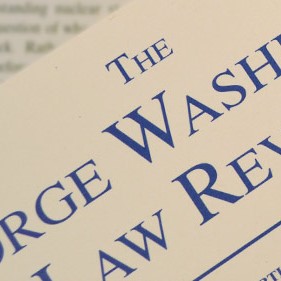Todd Zywicki · April 2013
81 GEO. WASH. L. REV. 856 (2013)
A centerpiece of the Dodd-Frank financial reform legislation was the creation of a new Federal Consumer Financial Protection Bureau (“CFPB”) within the Federal Reserve. Few bureaucratic agencies in American history, if any, have combined the vast power and lack of public accountability of the CFPB. It is an independent agency inside another independent agency, presided over by a single director who is insulated from presidential removal. Additionally, the Board is outside of the congressional appropriations process. Finally, its actions are unreviewable by the Federal Reserve—they can be checked bureaucratically only by a supermajority vote of the Financial Stability Oversight Council finding that the Board’s actions imperil the safety and soundness of the American financial services industry.
Proponents of the CFPB argue that extreme independence is justified to insulate it from political pressures. But the history of regulation teaches that insulation can be isolation, resulting in inefficient regulation. Scholars over the past several decades have identified common pathologies associated with bureaucratic behavior. The CFPB’s structure virtually guarantees the manifestation of those pathologies in practice: excessive risk aversion, agency imperialism, and tunnel vision. Indeed, it is as if the CFPB were an agency frozen in amber during the Nixon Administration and thawed out today, completely unaware of the past several decades’ lessons on how to structure an effective regulatory strategy.
In the end, by manifesting these bureaucratic pathologies, the CFPB is likely to raise the price of and reduce access to credit, thereby harming the very consumers it was founded to protect.

